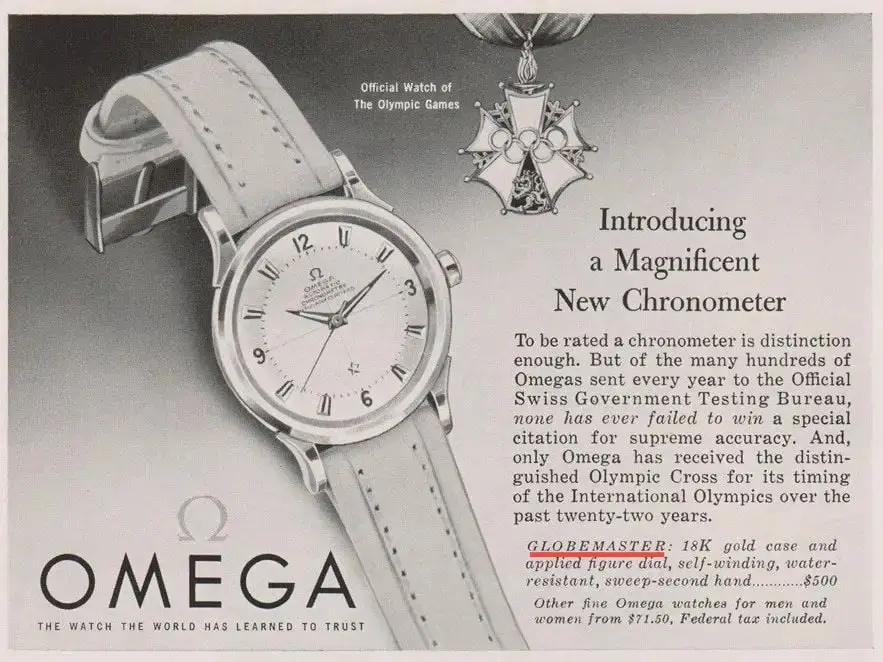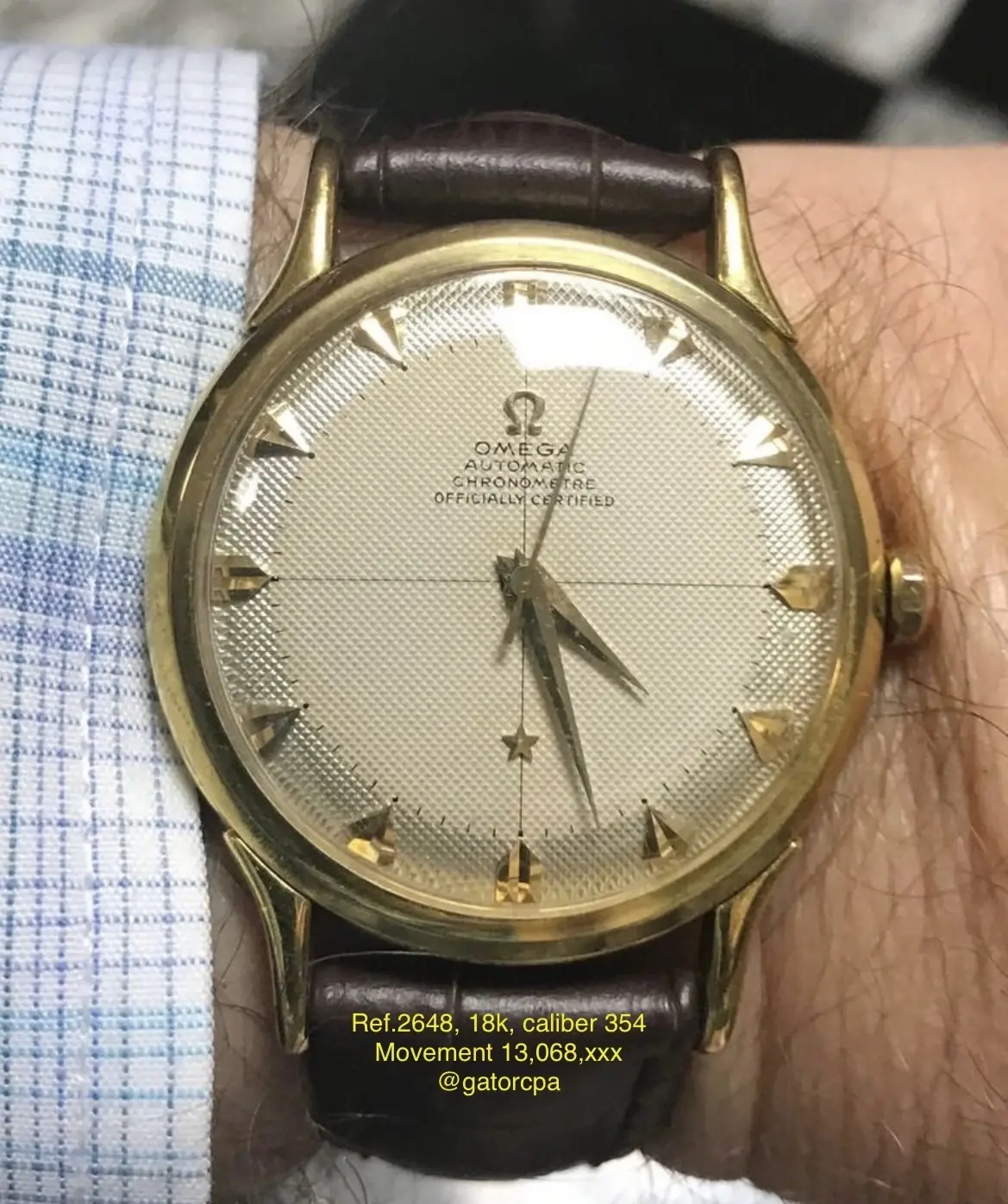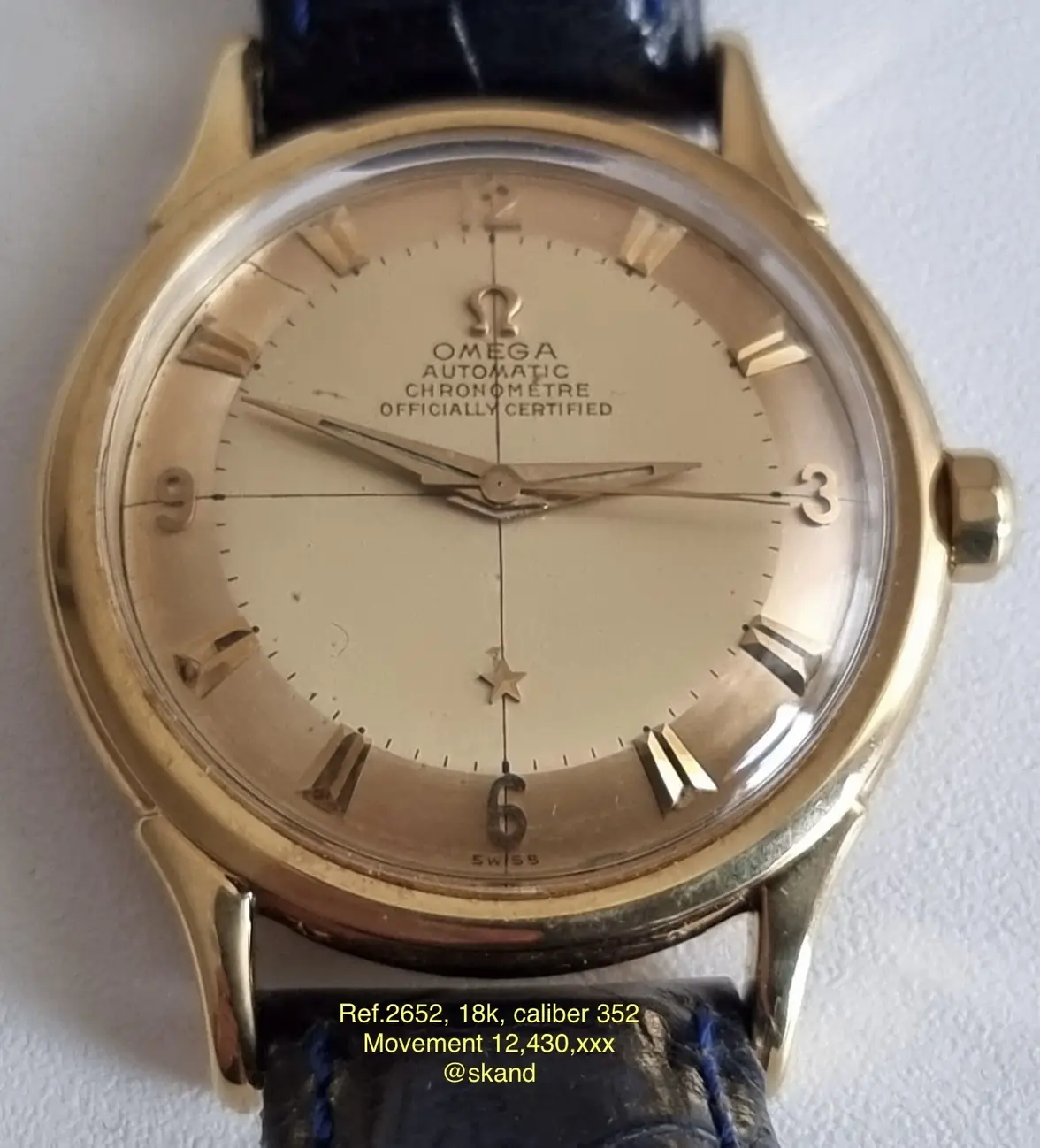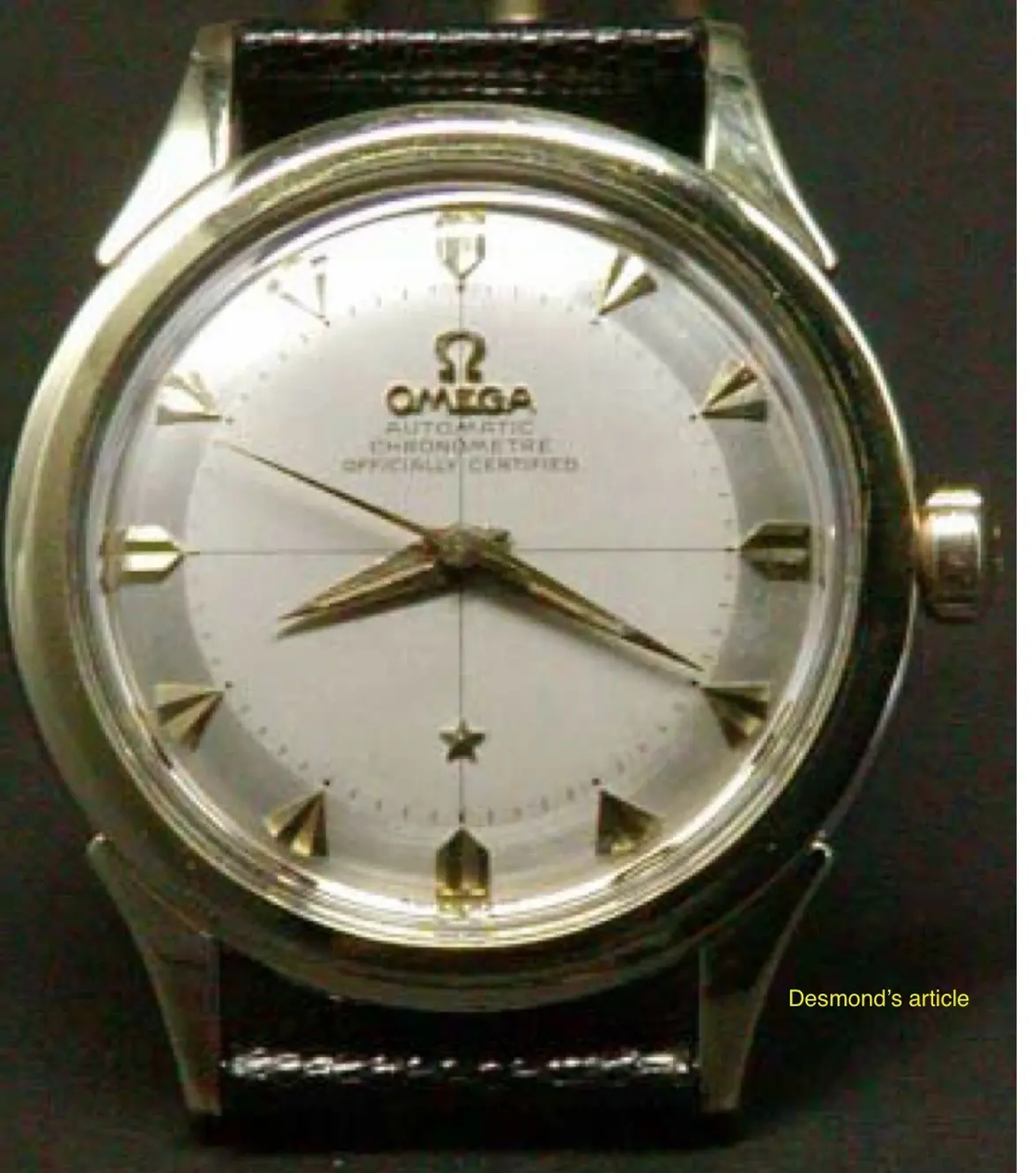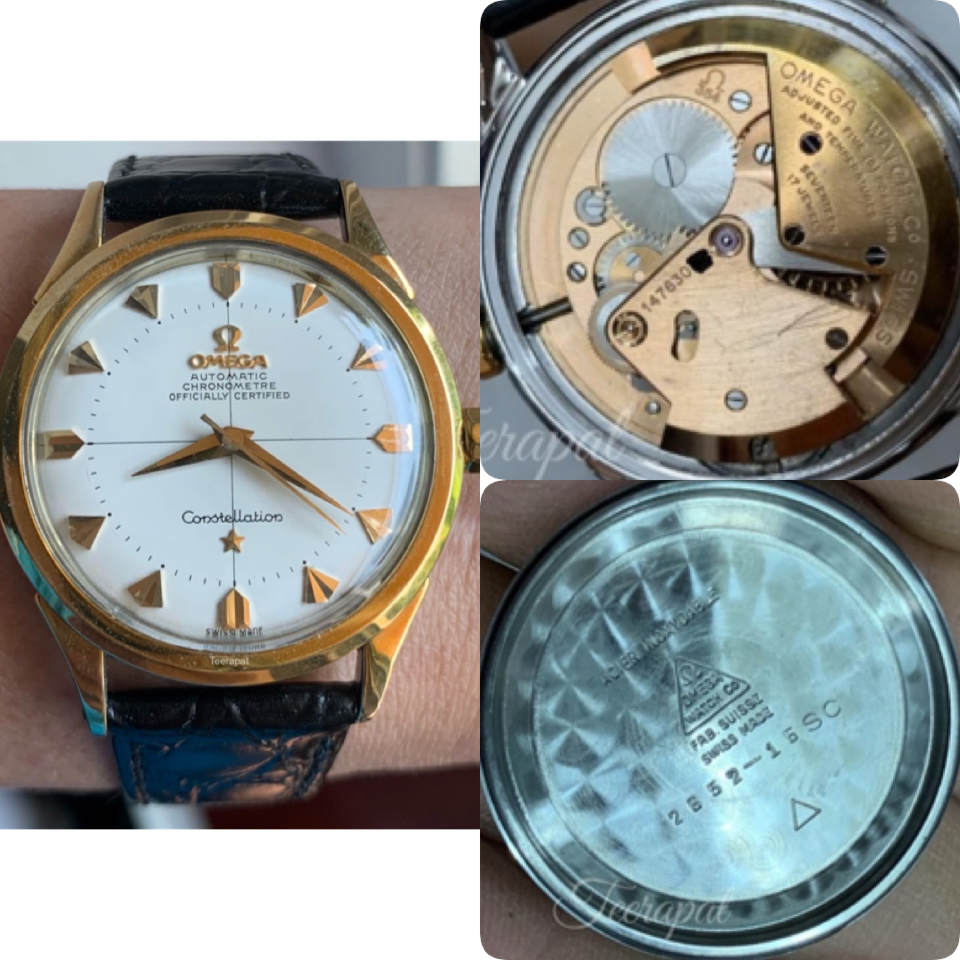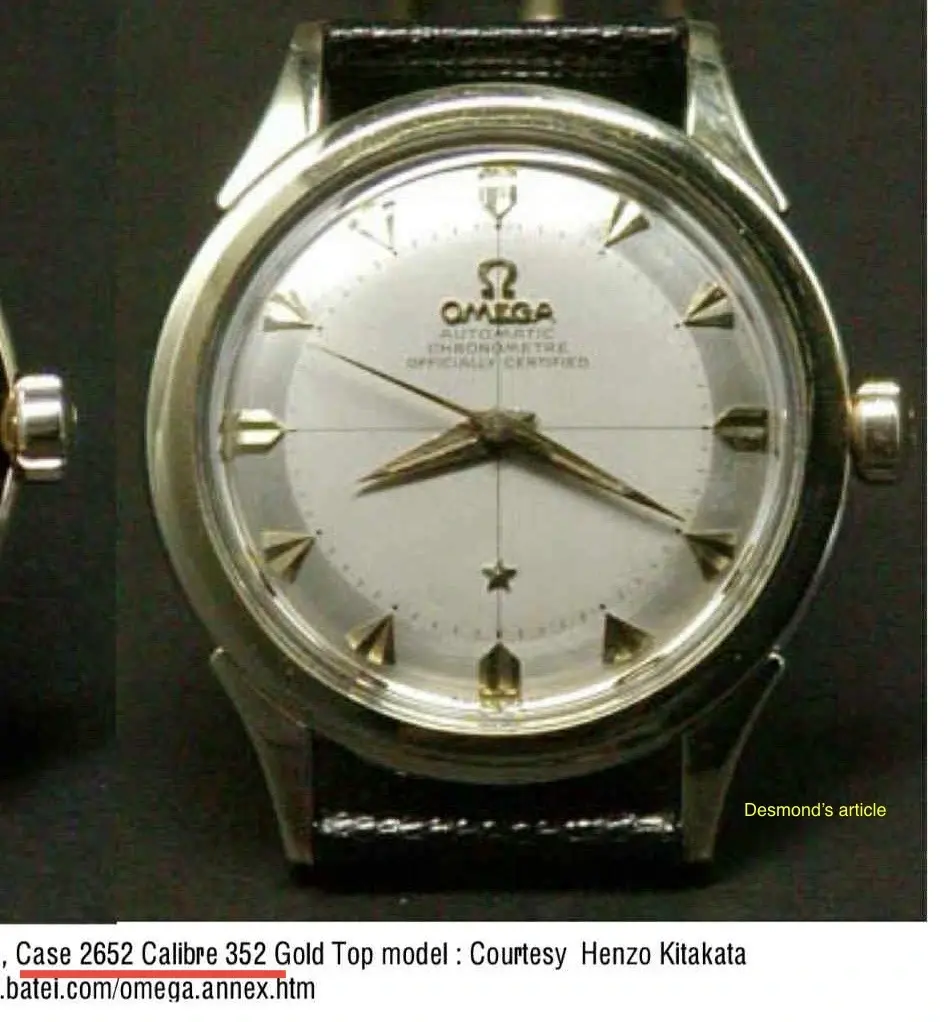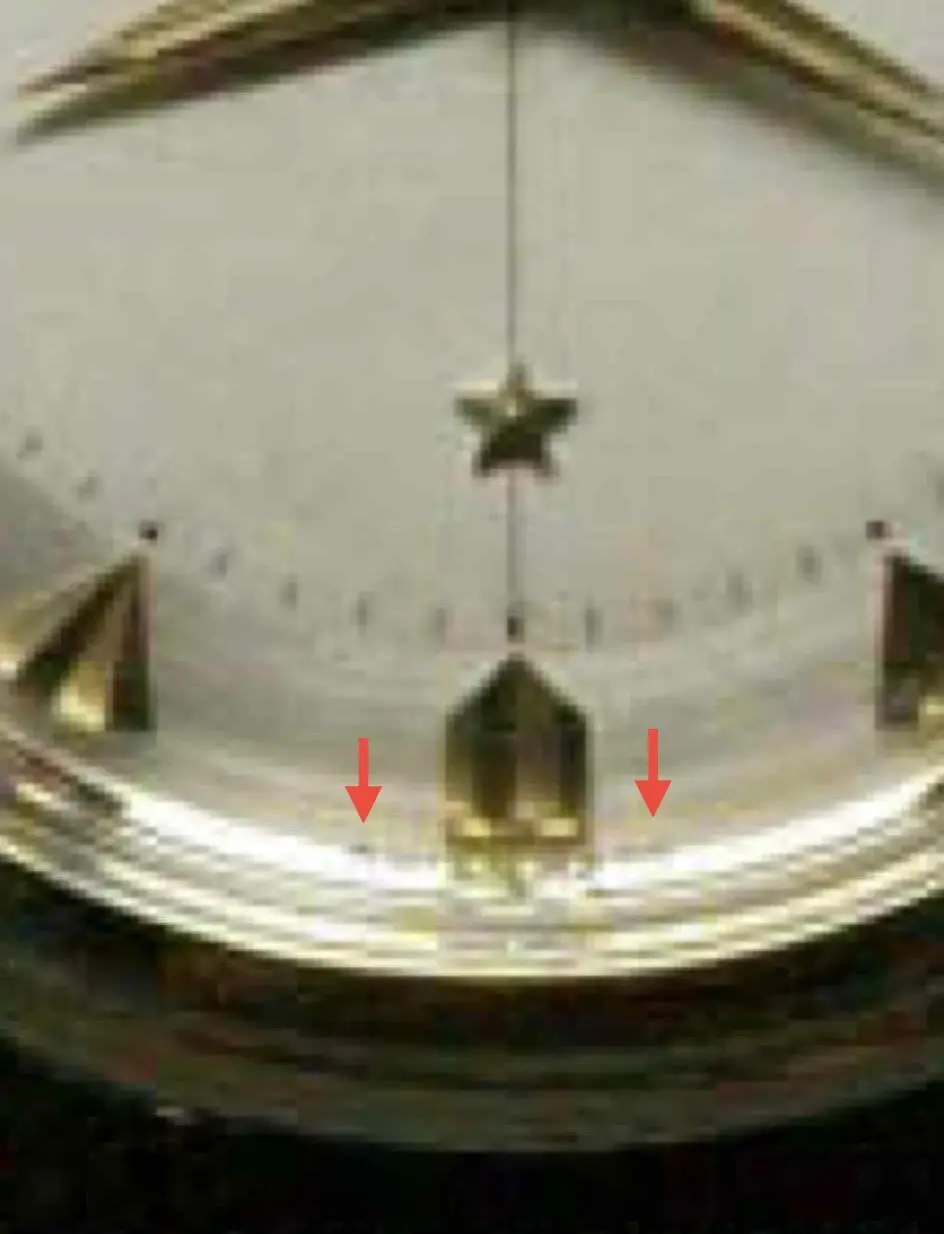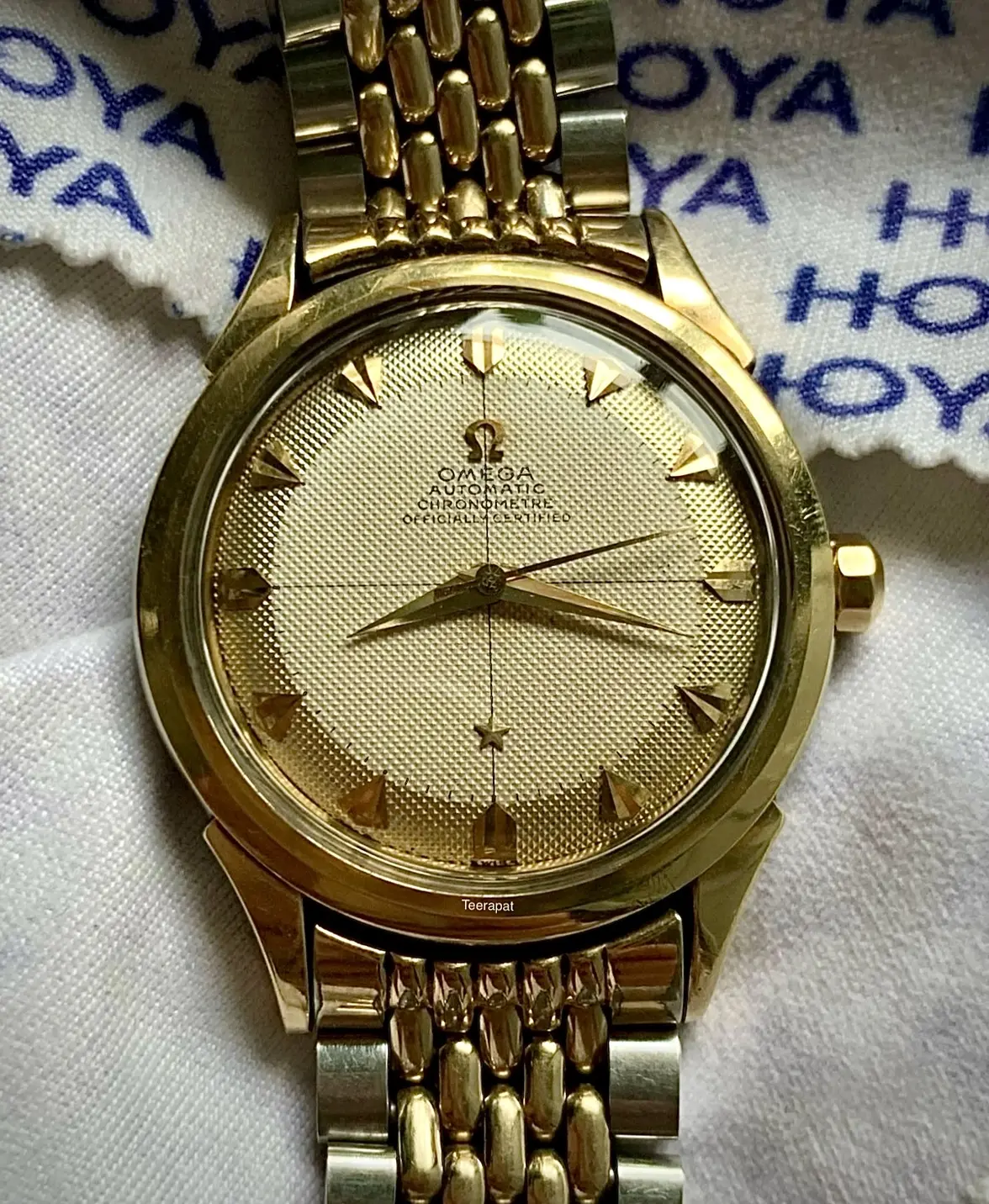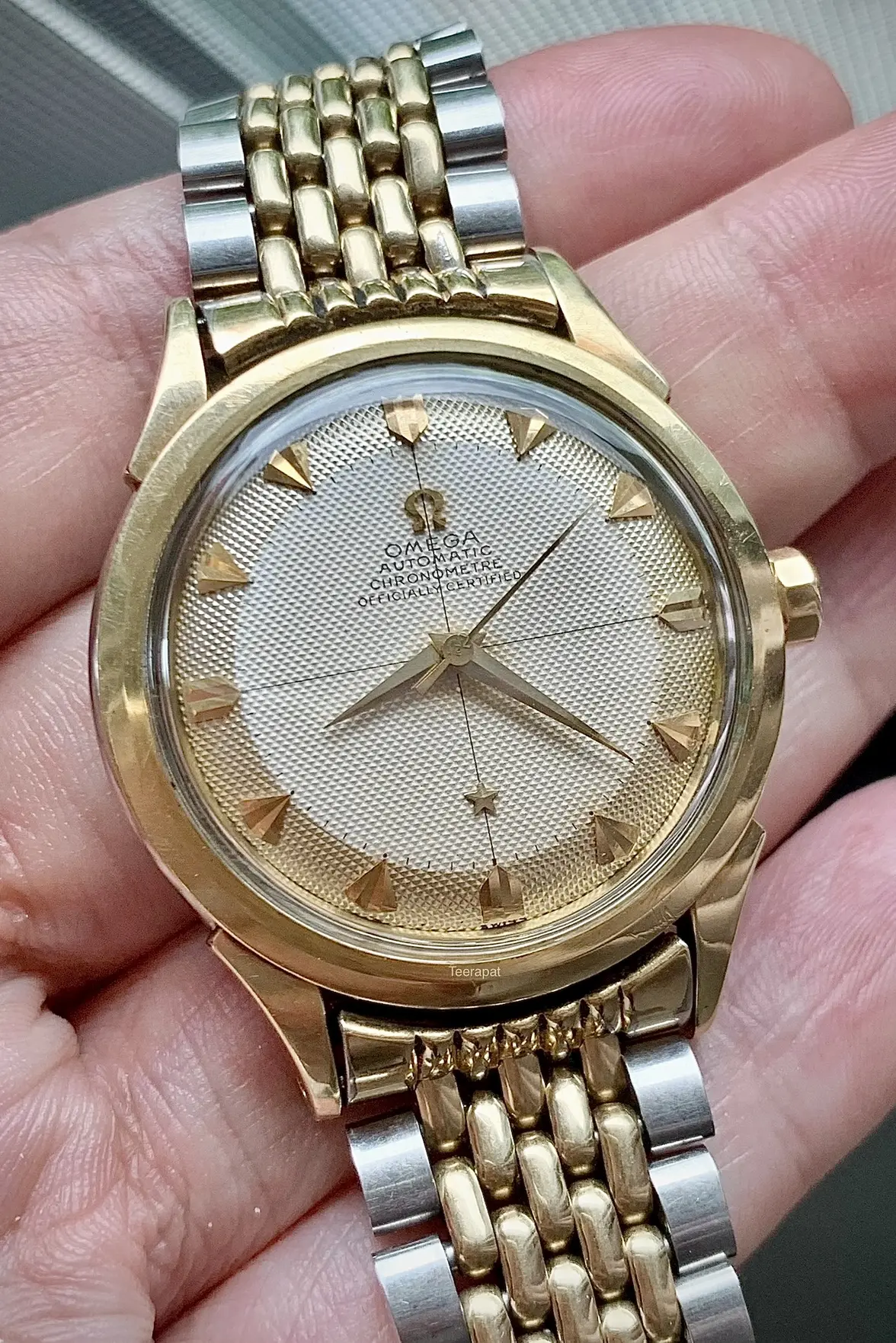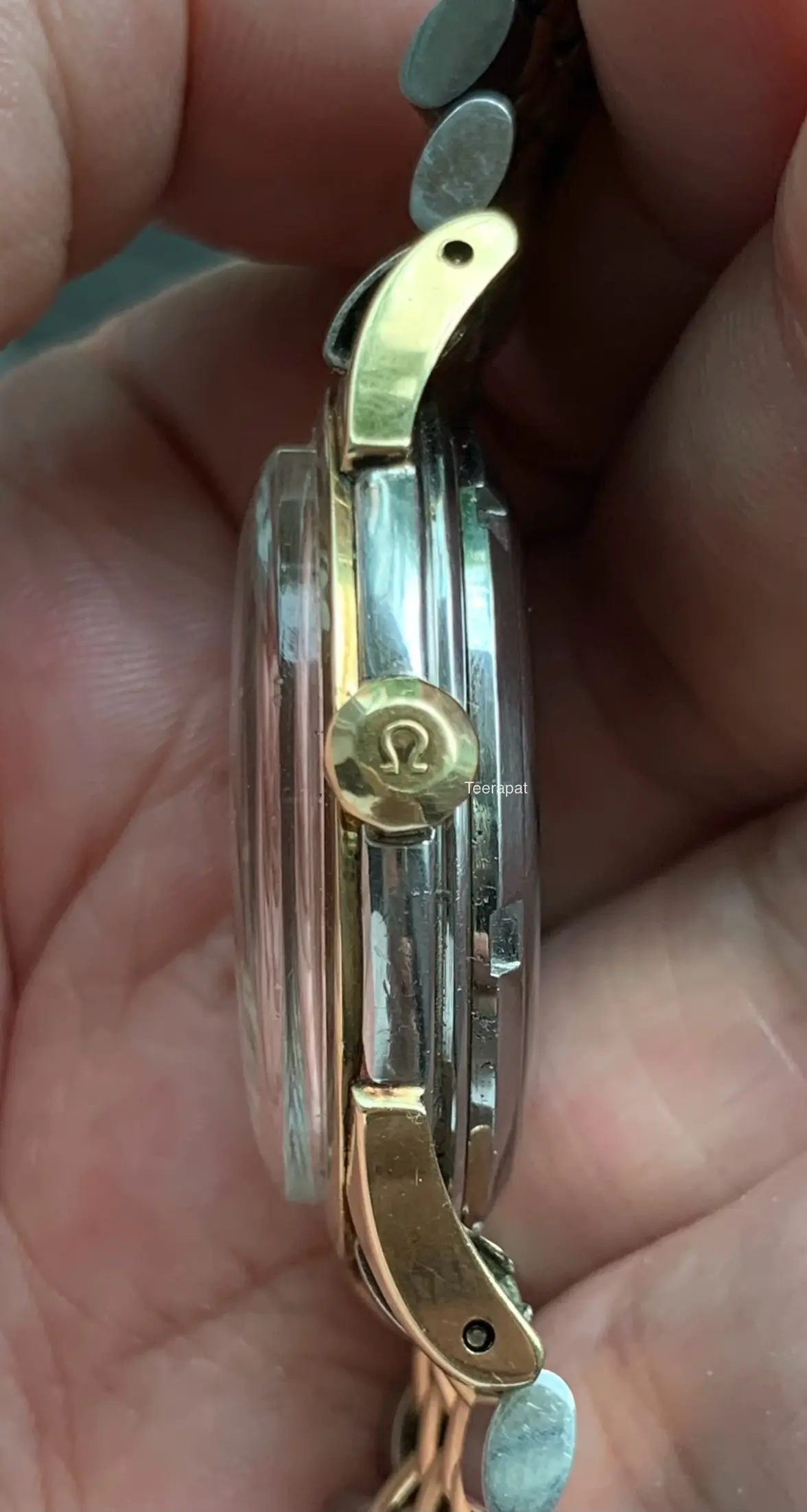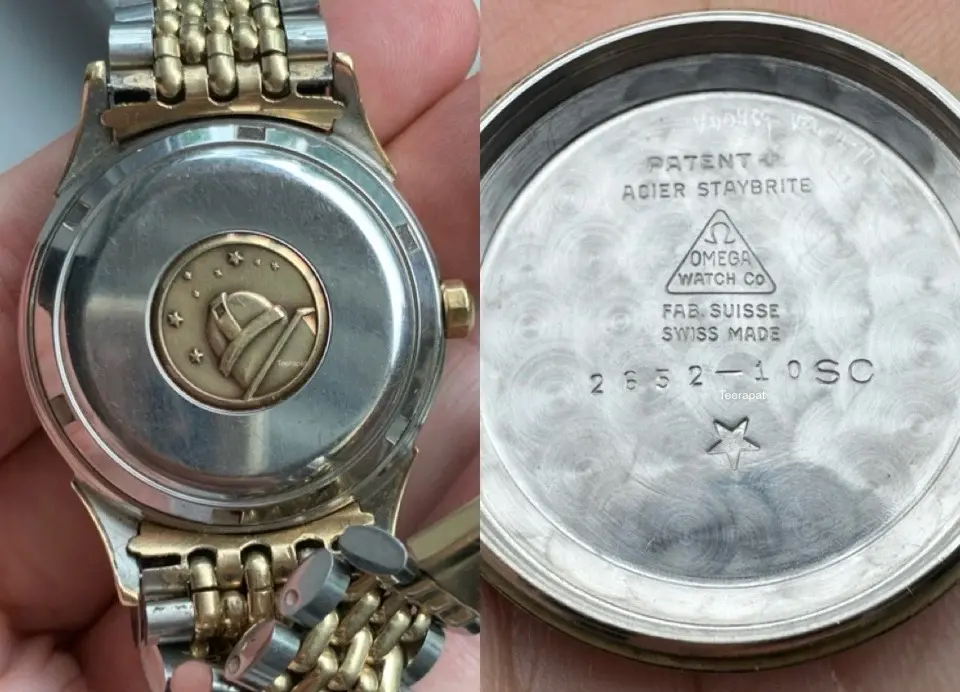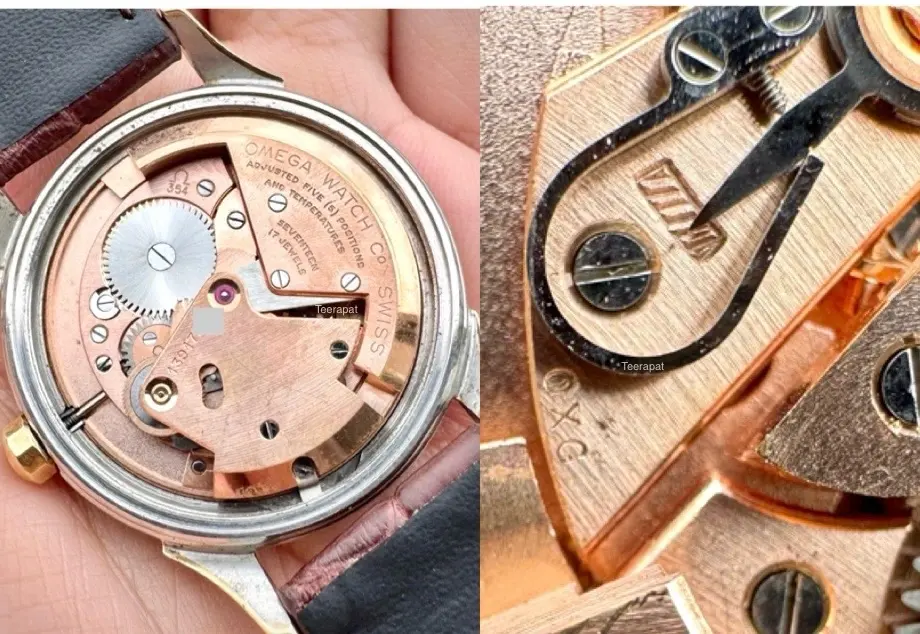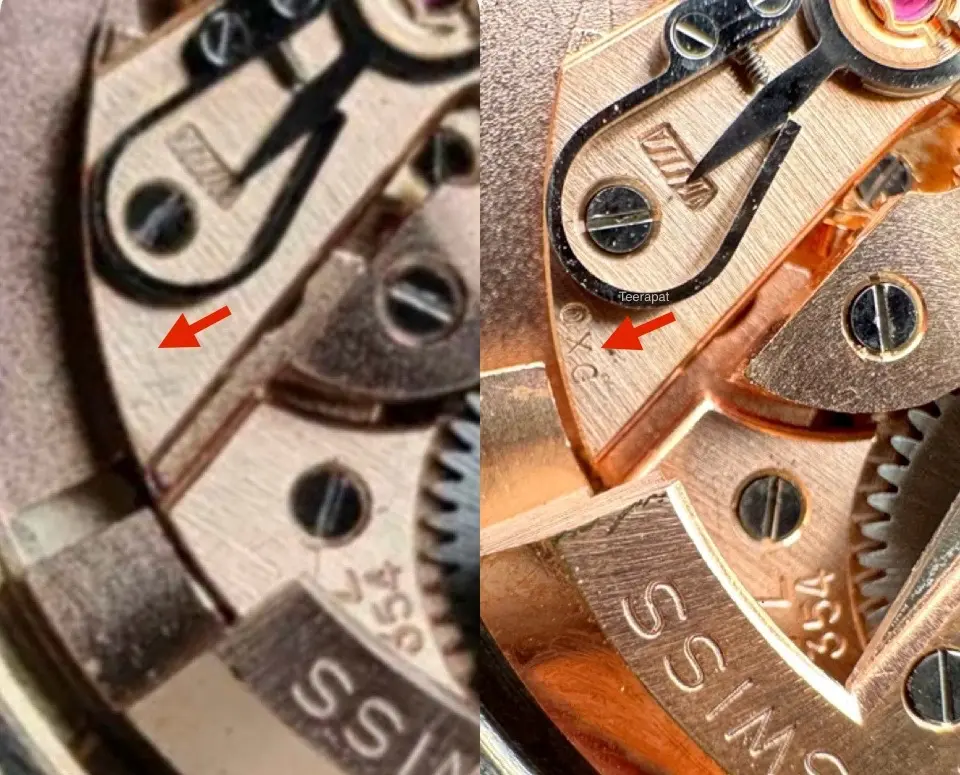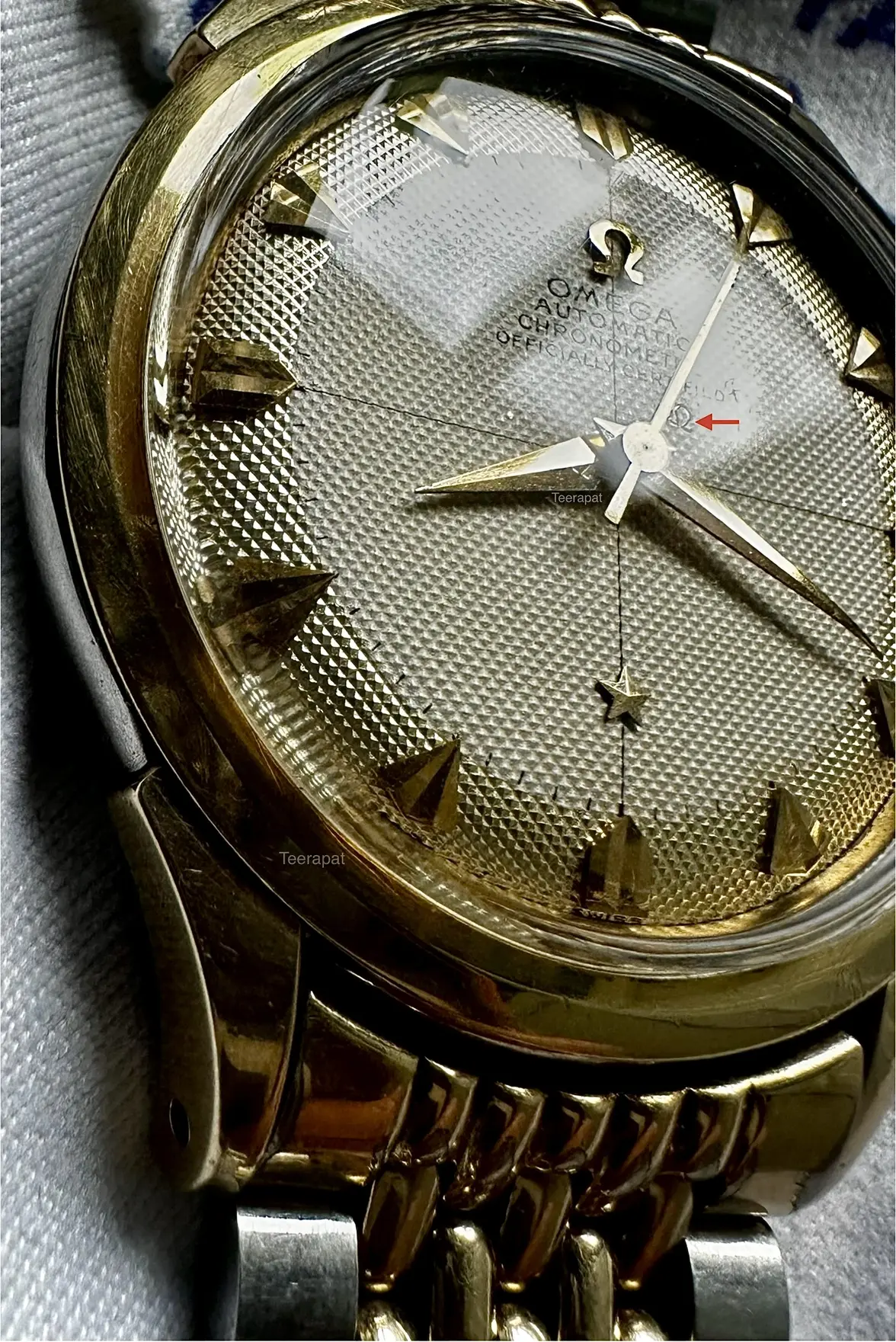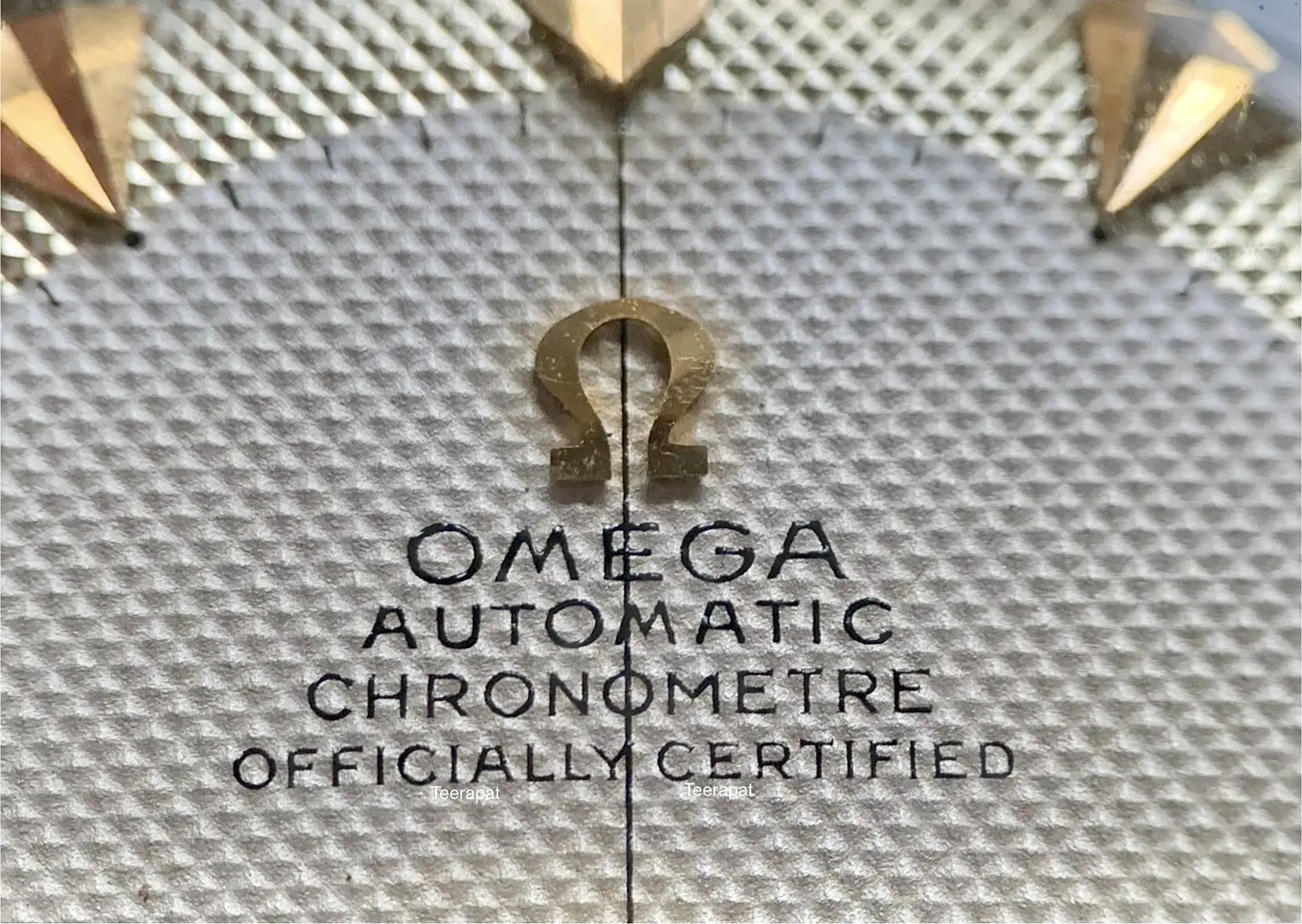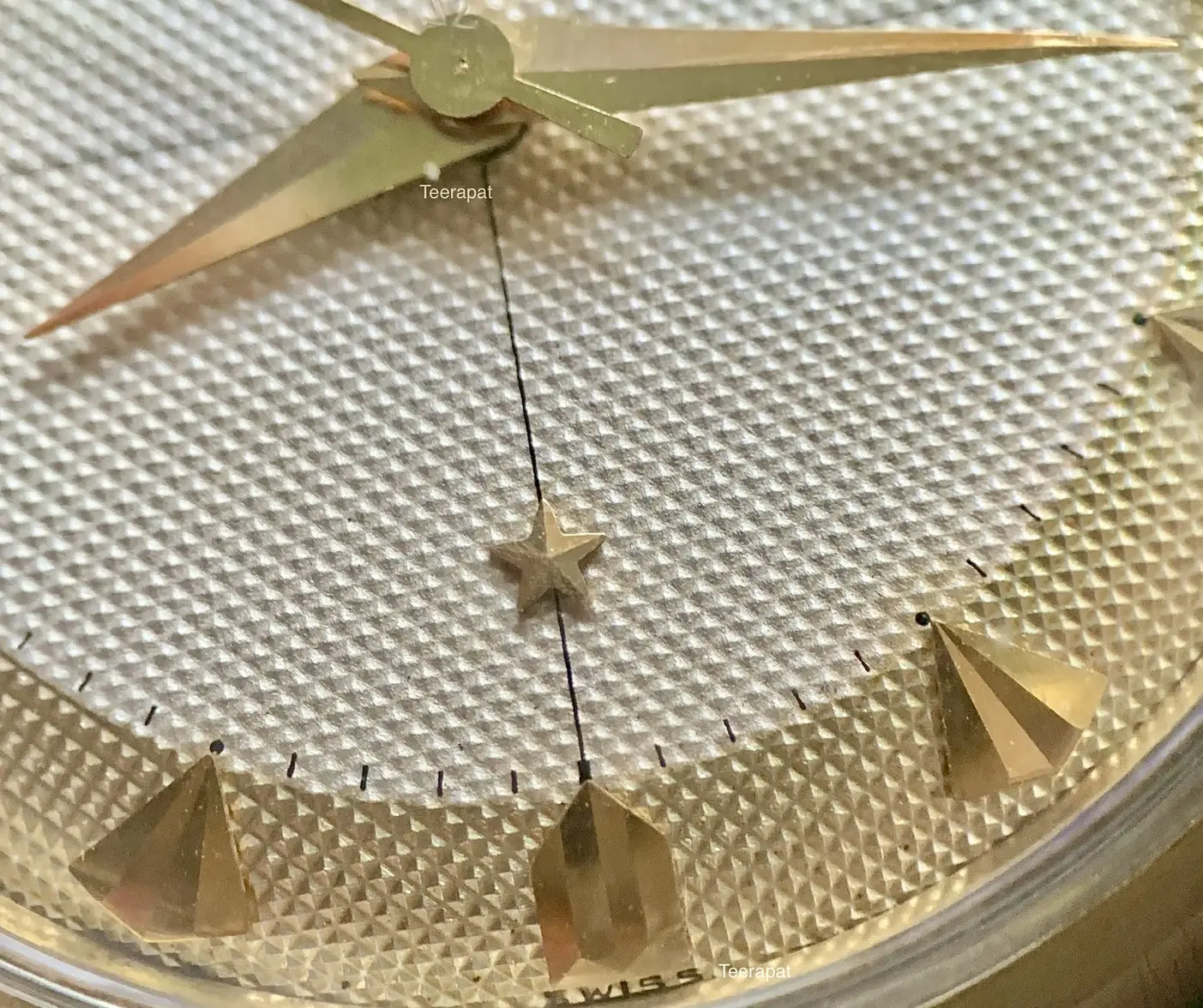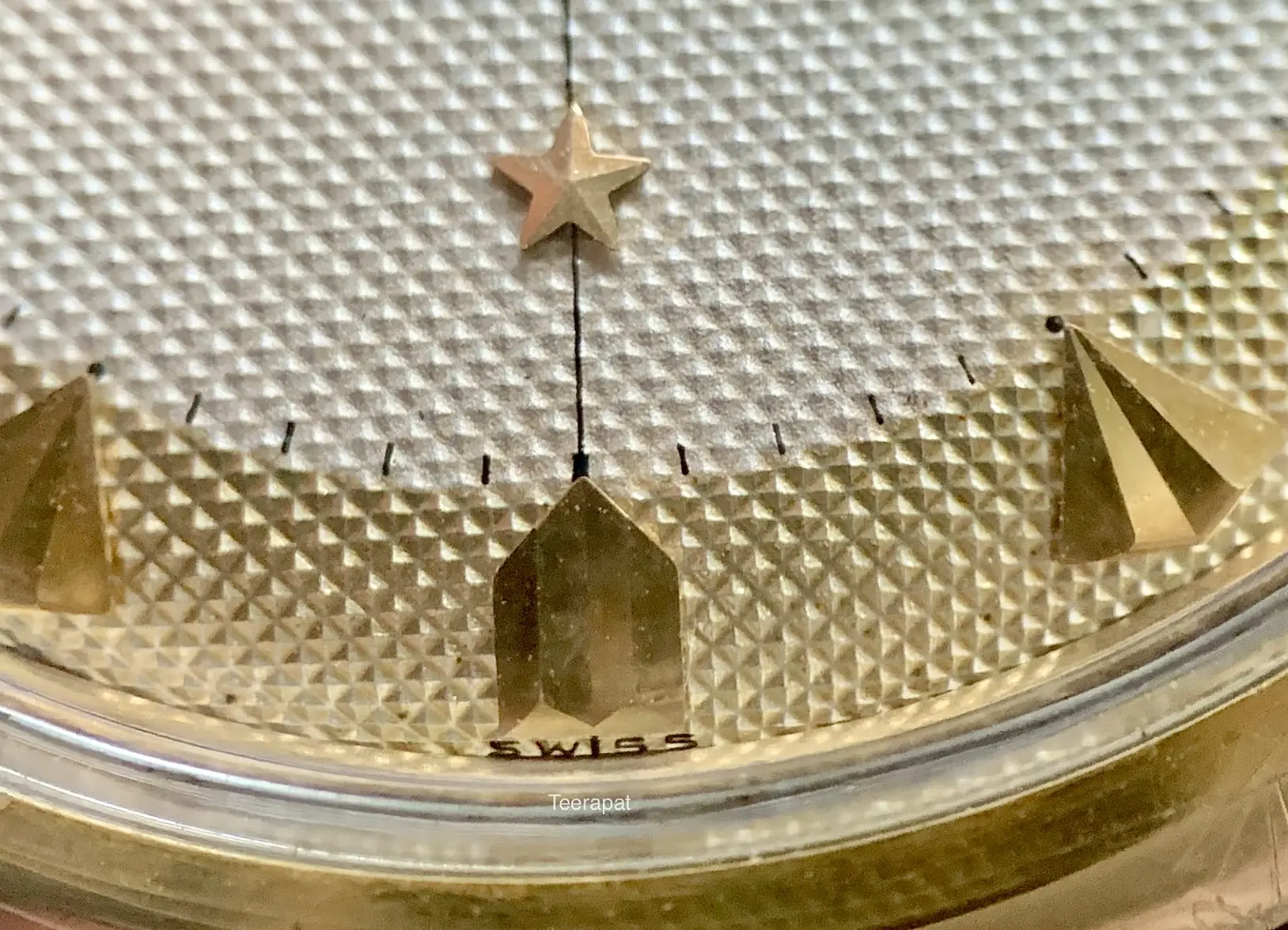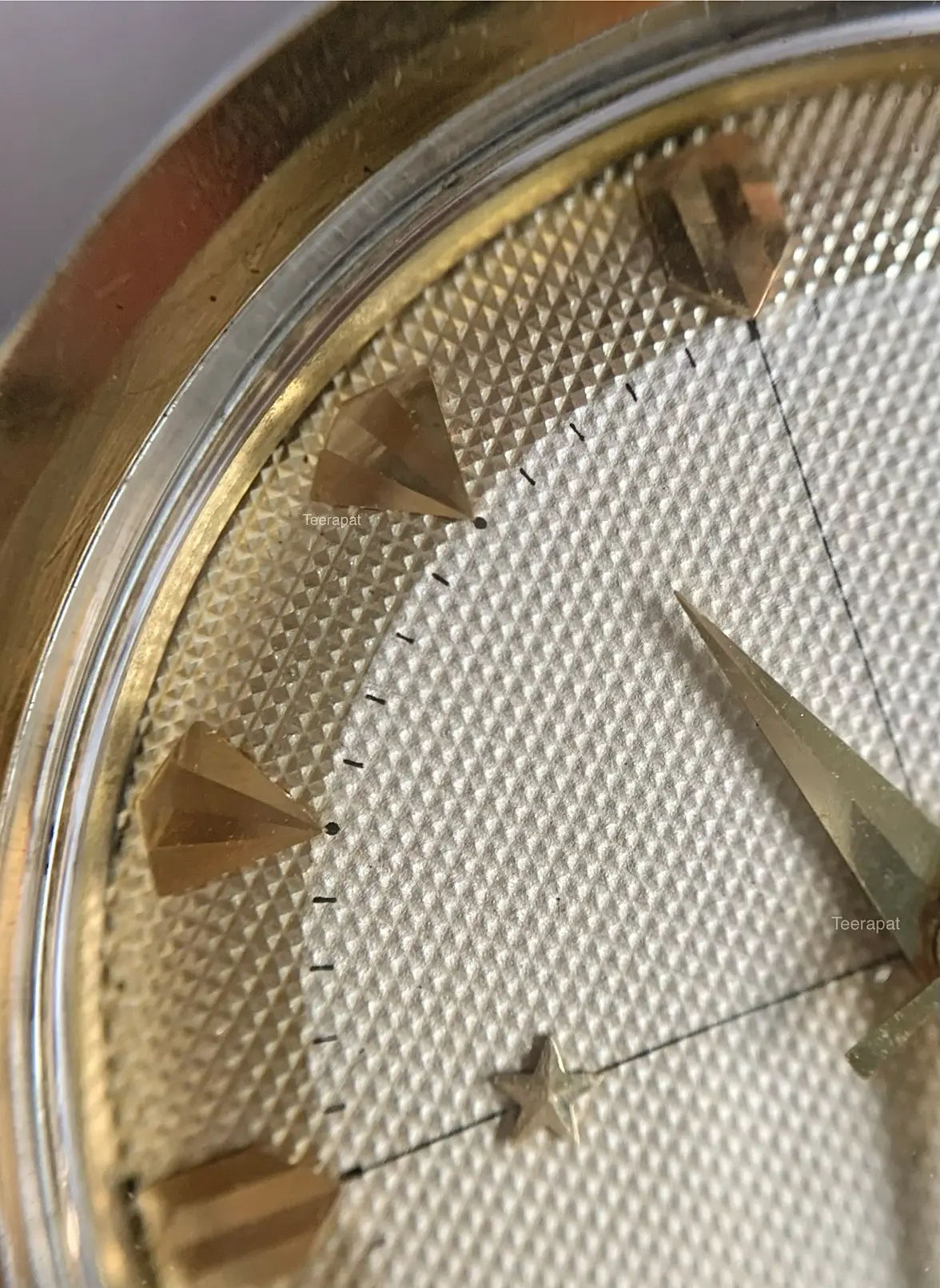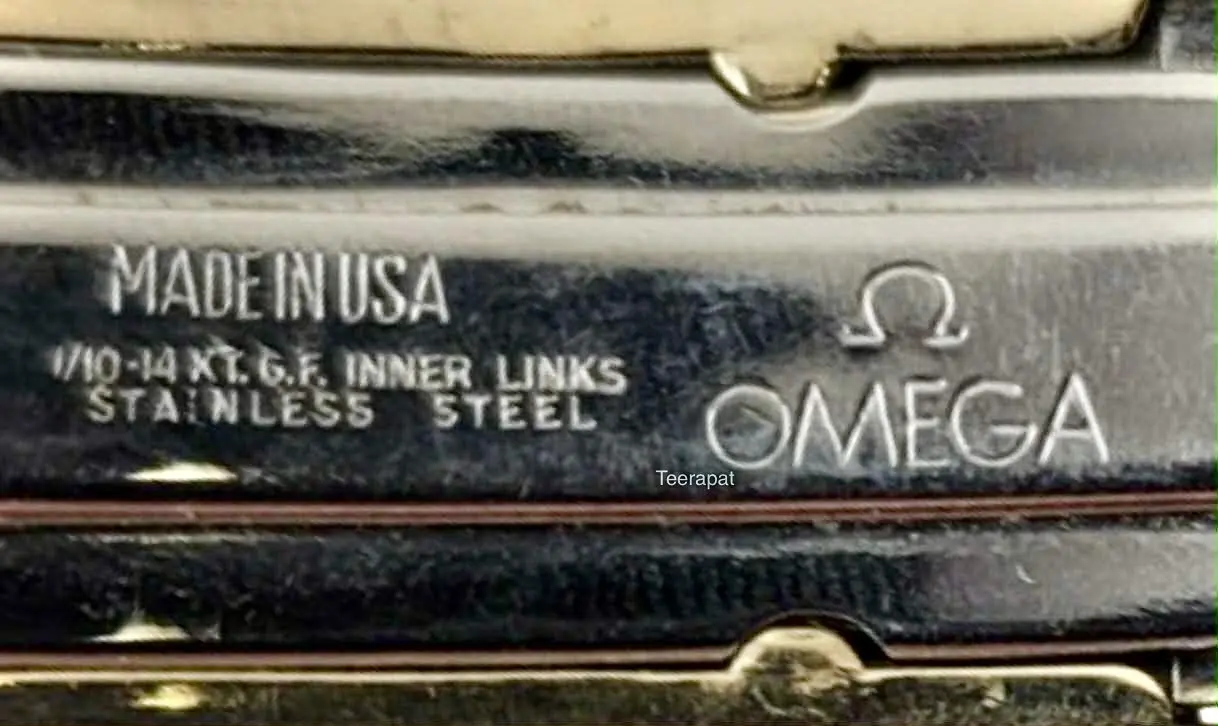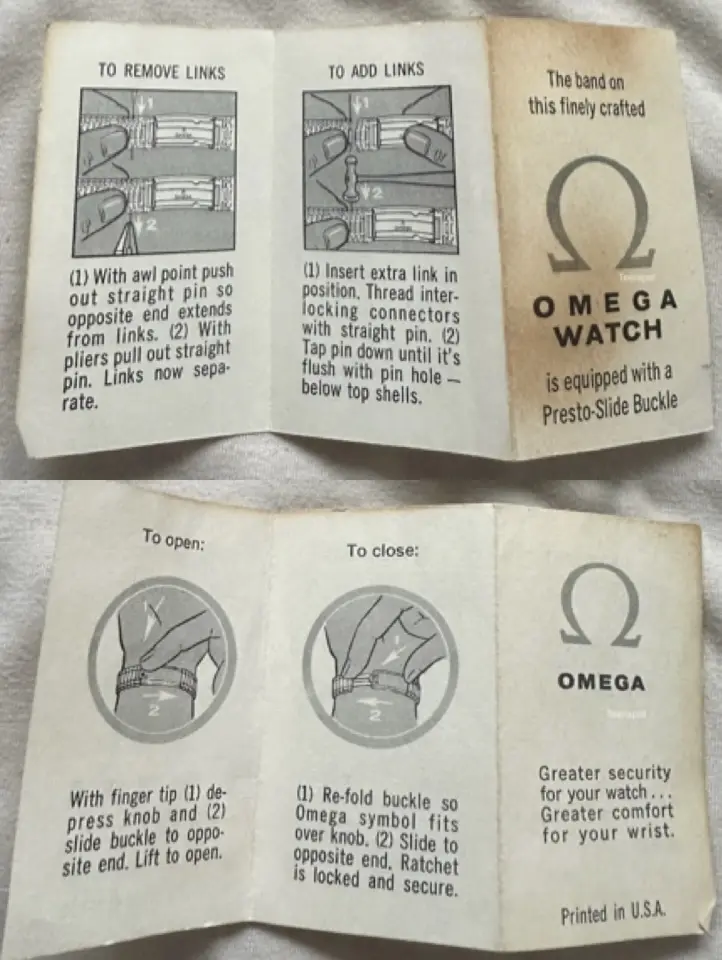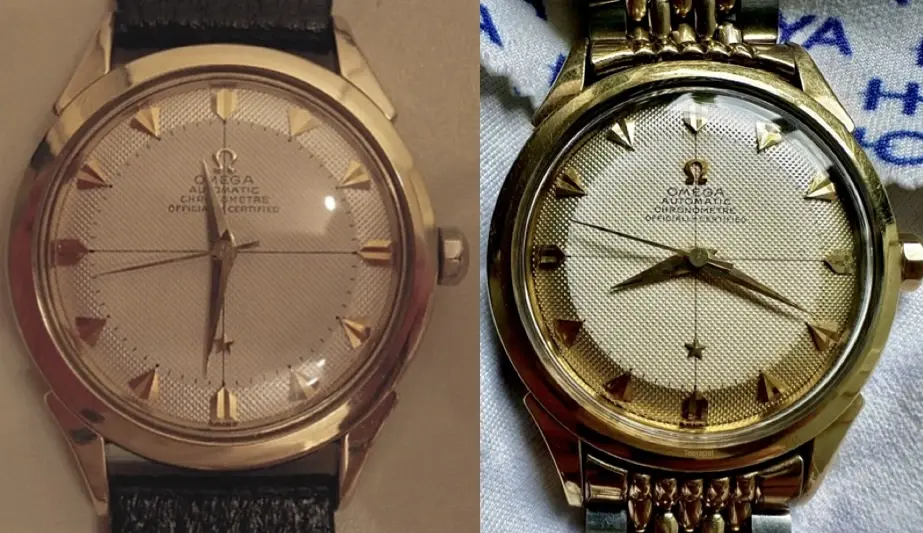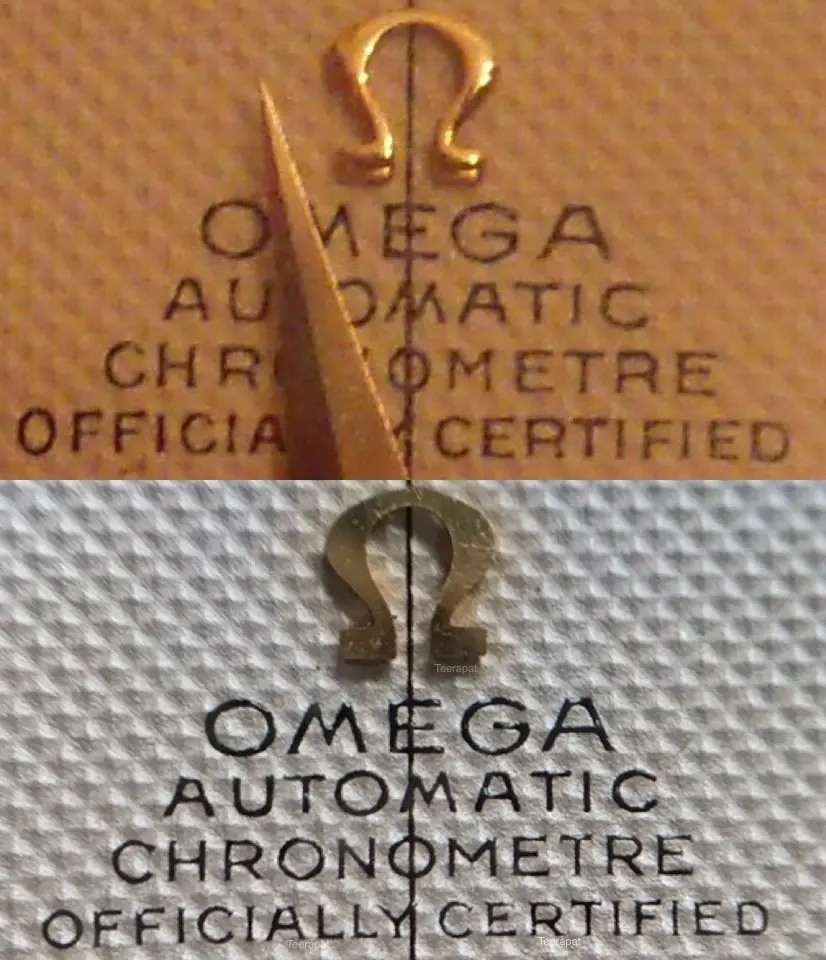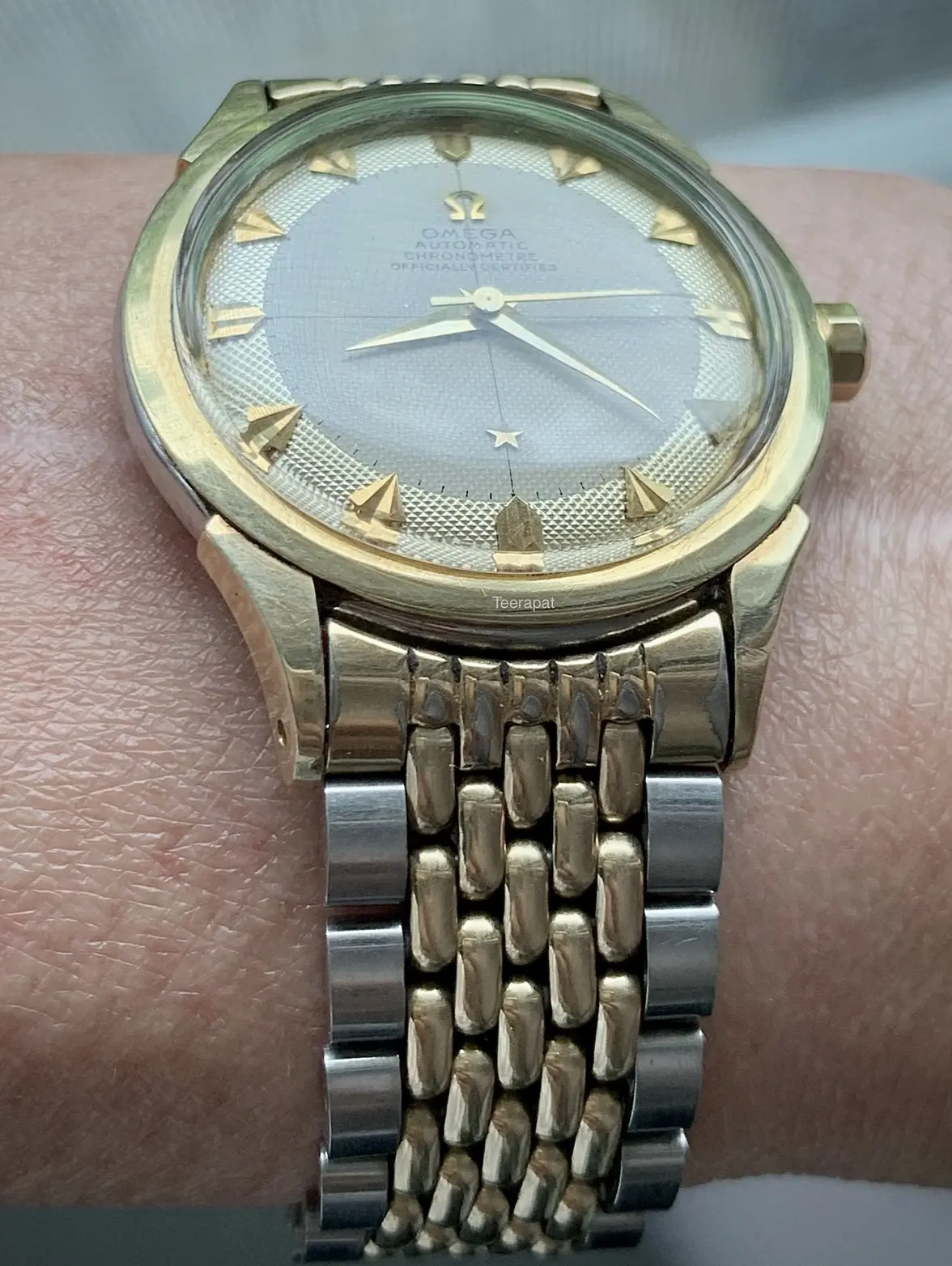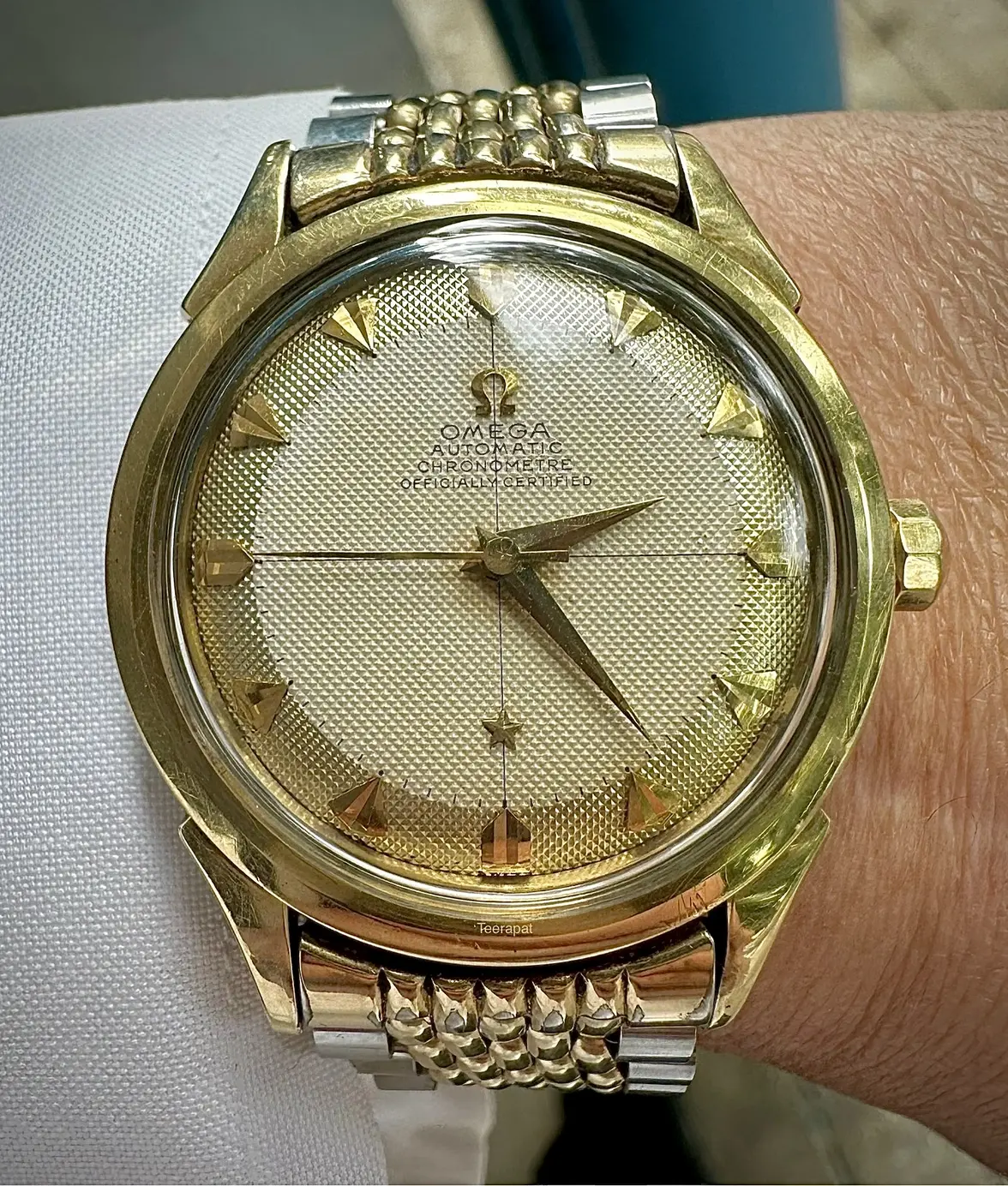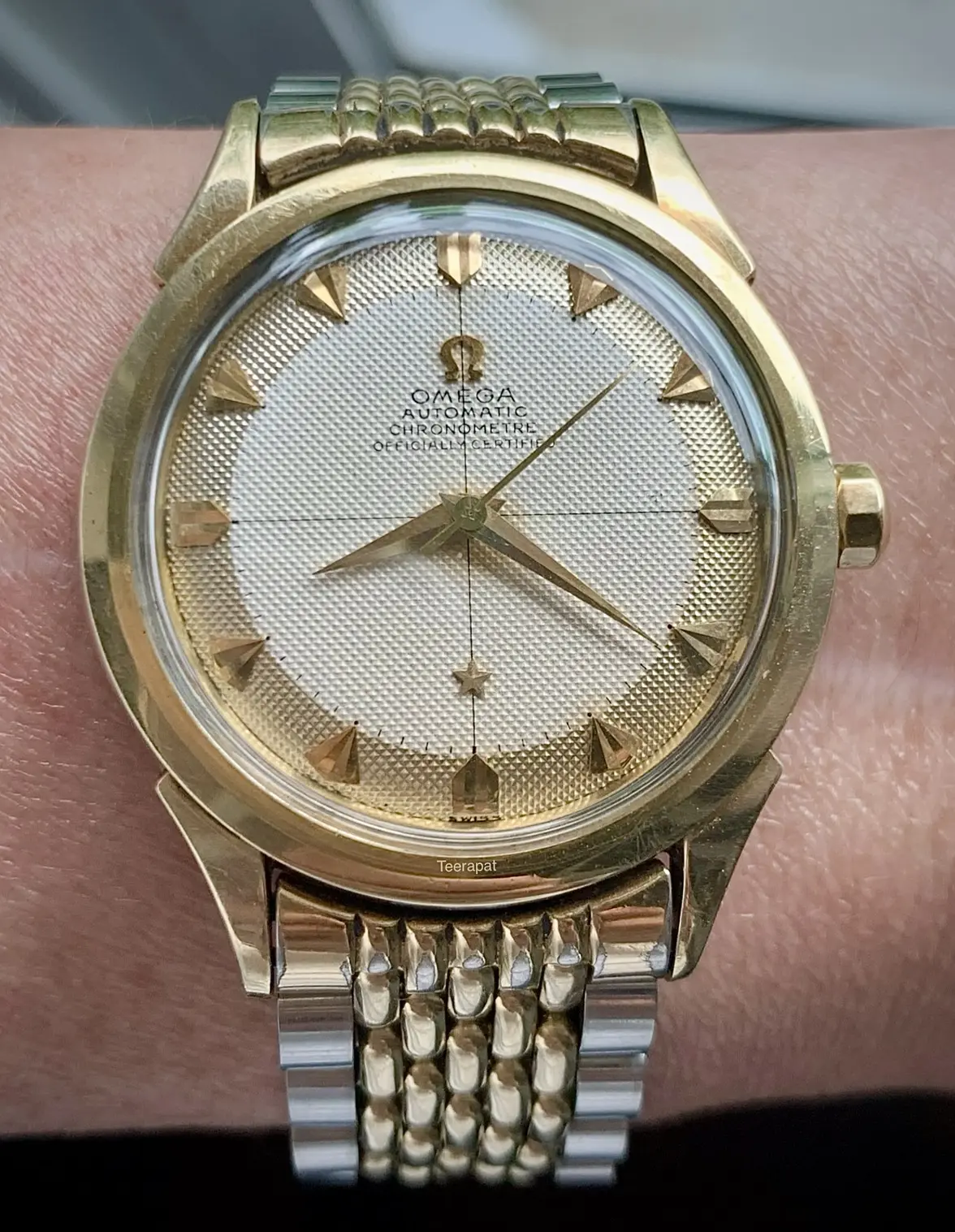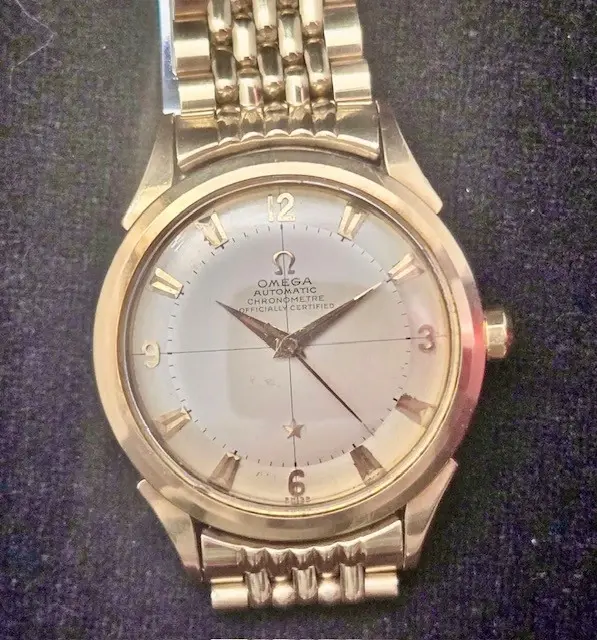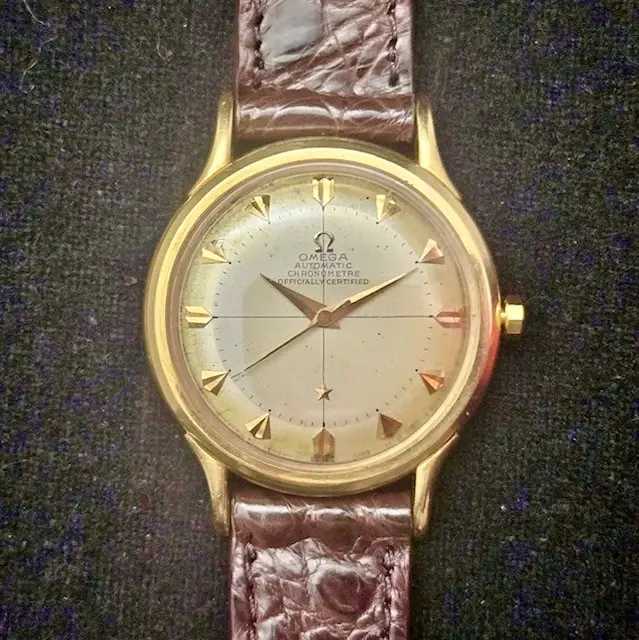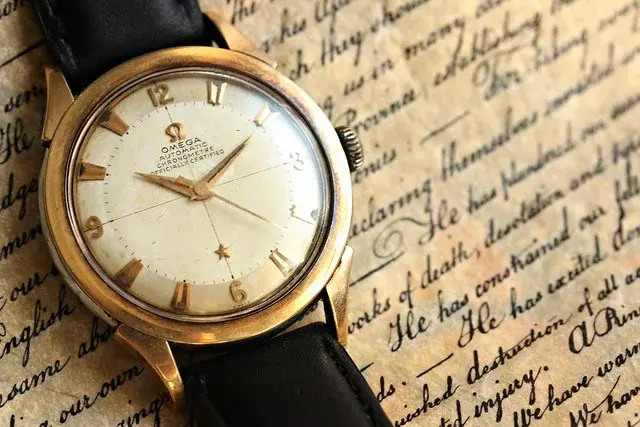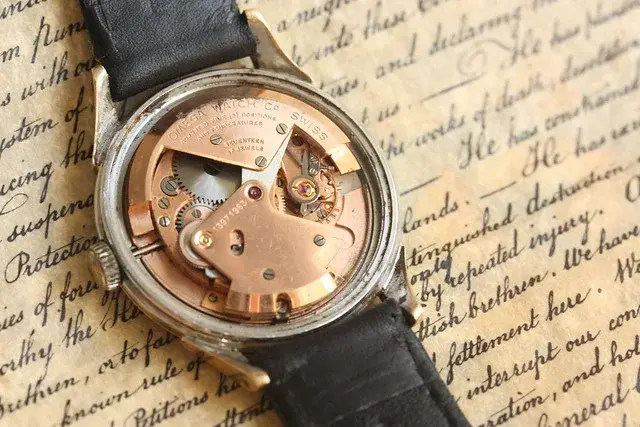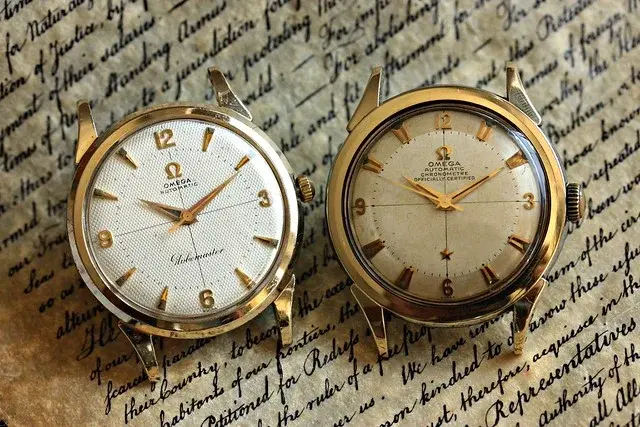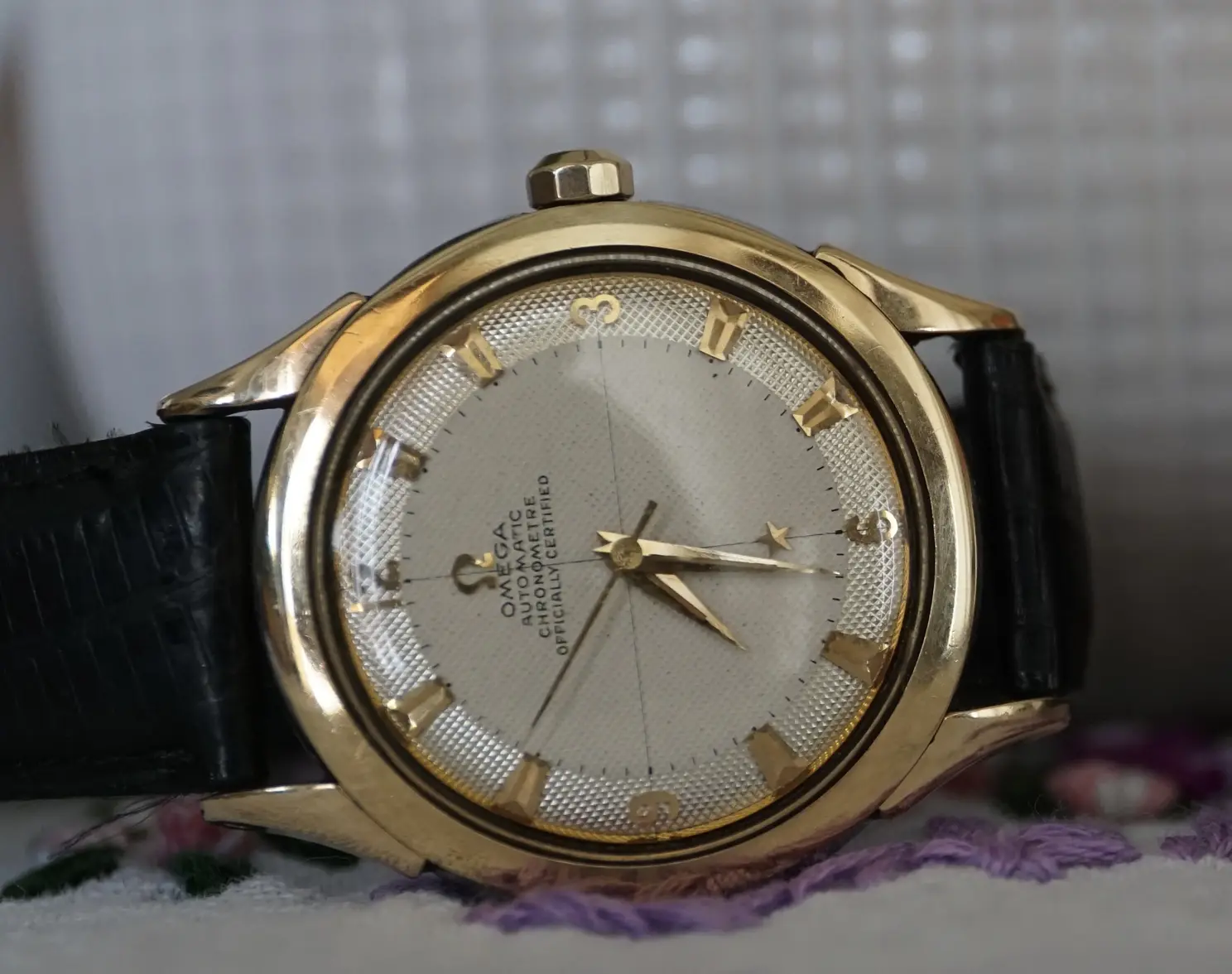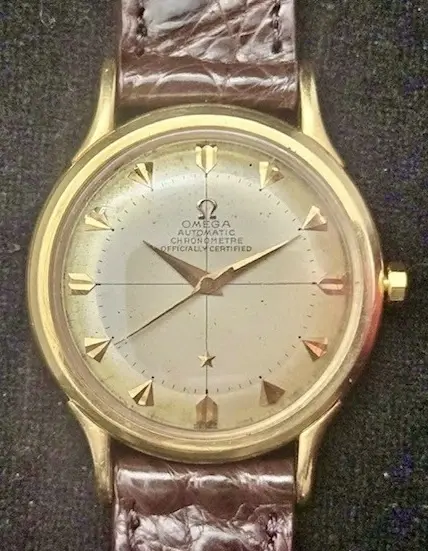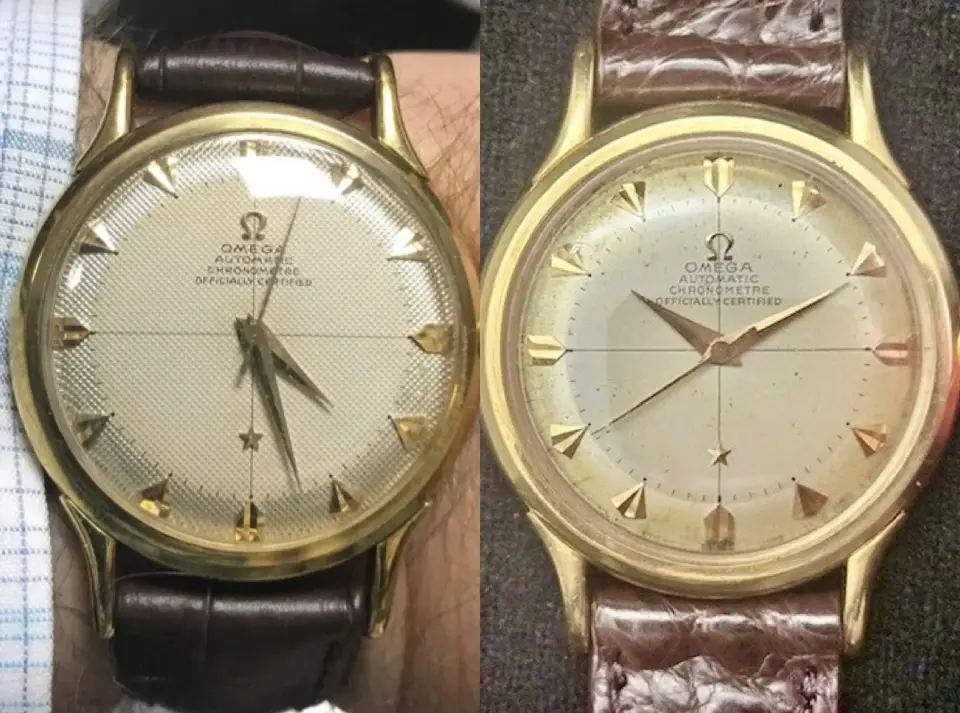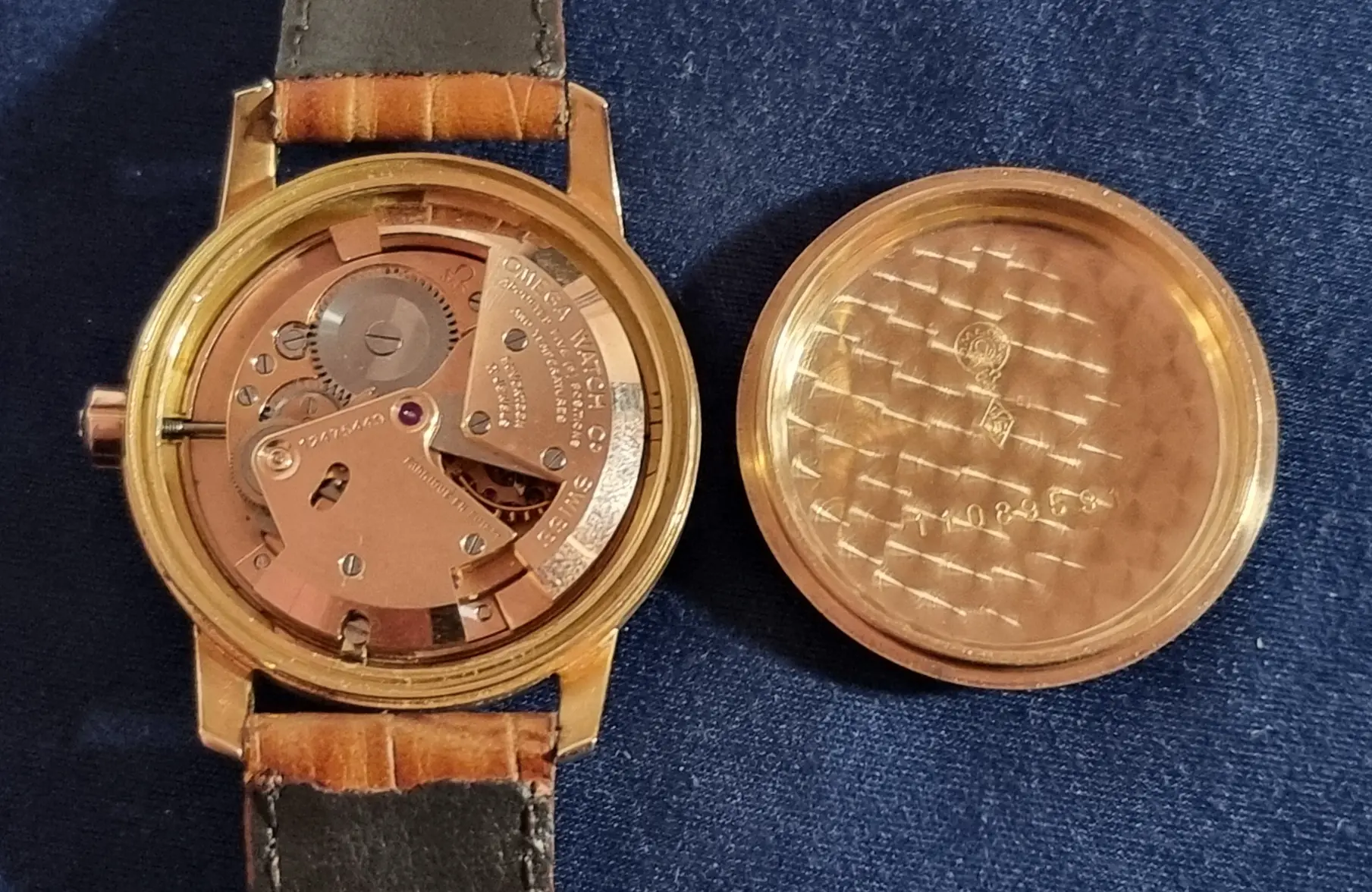qazwsx1
·Hello fellow members of Omegaforums,
Today, I would like to share my findings on this uncommon “no-name” Constellation, also referred to as the “Globemaster”. This model was produced exclusively for the U.S. market, and due to copyright issues at the time, the word “Constellation” was omitted from the dial.
For background reading, here is Desmond’s excellent article on the subject:
• http://omega-constellation-collectors.blogspot.hk/2006/08/globemaster-son-of-constellation.html?m=1
• https://download1648.mediafire.com/...NE2oKrXIw/r6z1f6wcg9qeqfg/Globemasterpost.pdf
From my research, this “no-name” Constellation appears only in gold-cap and 18k solid gold cases. Based on discussions with several collectors and experts, there are no confirmed examples in stainless steel, and no original black dial versions have been observed. The reason remains unclear.😊
The earliest known example appears in reference 2648. I have found two watches under this reference: the earliest one, with a movement number as low as 12,337,288, was previously owned by @Kyle, and the other example is owned by @gatorcpa. Both early pieces are in 18k gold.
The earliest production also used caliber 352, as seen in the early-production reference 2652 example from @skand, which has a movement number in the 12,430,xxx range.
Within the Globemaster group, I have identified two dial variants:
1. A version with Arabic numerals at 3, 6, 9, and 12
2. The more uncommon arrowhead marker version (the focus of this post)
Across both references (2648 and 2652), I have documented at least eight examples so far—three with a domed dial and the rest with a waffle pattern. The 18k ref. 2652 on the far left belongs to top collector Mike (@MSNWatches). The one on the far left is an 18k ref. 2648, owned by another collector, Evan (@gatorcpa), and is probably the earliest Globemaster to feature arrowhead markers.😍
However, two watches I recently reviewed is likely to be the redial examples. Because for the most correct execution, the minute track next to the hour markers for the reference 2652 should use the circular dots rather than rectangular blocks.
This point was originally discussed in a 2016 thread:
There is also a watch shown in Desmond’s article that raises some questions for me.
Although the photo quality is poor, the applied Omega logo looks unusual. A late-period 2652 can indeed have this later applied logo type—as seen on my own example from the transition batch (2652-15).
However, it contradicts the fact that the watch is fitted with caliber 352, which should indicate an early production period. I also noticed that the text under 6 o’clock may read “SWISS MADE” instead of the expected single “SWISS”.
________________________________________
My Watch:
Reference 2652-10, movement 13,918,xxx
In my view, the case is still in very good condition, especially compared to most gold-cap examples. The thick, flat-feet decagonal crown is original.
Another important detail is the “OXG” stamp on the balance bridge, confirming U.S. market delivery (see highlighted photo).
More close-up photos follow below.
• Note the original applied logo (red arrow)
• Note the thin and delicate font style
• The single “SWISS” at 6 o’clock is faint, which is normal on arrowhead-marker dials
• The two-tone dial remains beautiful under different lighting angles
________________________________________
BOR Bracelet and Buckle
This original two-tone Beads-of-Rice bracelet features the “Presto-Slide Buckle”, which is quite interesting. The inside of the clasp is not stamped 1036 or 8220, but instead marked:
“MADE IN U.S.A. 1/10 14KT G.F. INNER LINKS STAINLESS STEEL”
I am fortunate to have an original U.S.-printed Omega instruction sheet explaining how the buckle works (pictured below).
________________________________________
Dial Variations
There are some differences compared to the example owned by Evan (@gatorcpa). The most obvious ones are:
• The Omega logo shape
• The form of the letter “R” in “CHRONOMETRE”
________________________________________
My Wrist Shots
Below are photos in both indoor and natural light, where the two-tone effect is clearly visible.
________________________________________
Final Notes
If anyone owns—or has seen—another Globemaster example not included here, I would greatly appreciate if you could share it for documentation purposes.
Thank you very much for reading. If you find this research useful, a “like” would be appreciated, and I welcome all comments and discussion. 🙏👍🙏
Best,
Teerapat
Today, I would like to share my findings on this uncommon “no-name” Constellation, also referred to as the “Globemaster”. This model was produced exclusively for the U.S. market, and due to copyright issues at the time, the word “Constellation” was omitted from the dial.
For background reading, here is Desmond’s excellent article on the subject:
• http://omega-constellation-collectors.blogspot.hk/2006/08/globemaster-son-of-constellation.html?m=1
• https://download1648.mediafire.com/...NE2oKrXIw/r6z1f6wcg9qeqfg/Globemasterpost.pdf
From my research, this “no-name” Constellation appears only in gold-cap and 18k solid gold cases. Based on discussions with several collectors and experts, there are no confirmed examples in stainless steel, and no original black dial versions have been observed. The reason remains unclear.😊
The earliest known example appears in reference 2648. I have found two watches under this reference: the earliest one, with a movement number as low as 12,337,288, was previously owned by @Kyle, and the other example is owned by @gatorcpa. Both early pieces are in 18k gold.
The earliest production also used caliber 352, as seen in the early-production reference 2652 example from @skand, which has a movement number in the 12,430,xxx range.
Within the Globemaster group, I have identified two dial variants:
1. A version with Arabic numerals at 3, 6, 9, and 12
2. The more uncommon arrowhead marker version (the focus of this post)
Across both references (2648 and 2652), I have documented at least eight examples so far—three with a domed dial and the rest with a waffle pattern. The 18k ref. 2652 on the far left belongs to top collector Mike (@MSNWatches). The one on the far left is an 18k ref. 2648, owned by another collector, Evan (@gatorcpa), and is probably the earliest Globemaster to feature arrowhead markers.😍
However, two watches I recently reviewed is likely to be the redial examples. Because for the most correct execution, the minute track next to the hour markers for the reference 2652 should use the circular dots rather than rectangular blocks.
This point was originally discussed in a 2016 thread:
There is also a watch shown in Desmond’s article that raises some questions for me.
Although the photo quality is poor, the applied Omega logo looks unusual. A late-period 2652 can indeed have this later applied logo type—as seen on my own example from the transition batch (2652-15).
However, it contradicts the fact that the watch is fitted with caliber 352, which should indicate an early production period. I also noticed that the text under 6 o’clock may read “SWISS MADE” instead of the expected single “SWISS”.
________________________________________
My Watch:
Reference 2652-10, movement 13,918,xxx
In my view, the case is still in very good condition, especially compared to most gold-cap examples. The thick, flat-feet decagonal crown is original.
Another important detail is the “OXG” stamp on the balance bridge, confirming U.S. market delivery (see highlighted photo).
More close-up photos follow below.
• Note the original applied logo (red arrow)
• Note the thin and delicate font style
• The single “SWISS” at 6 o’clock is faint, which is normal on arrowhead-marker dials
• The two-tone dial remains beautiful under different lighting angles
________________________________________
BOR Bracelet and Buckle
This original two-tone Beads-of-Rice bracelet features the “Presto-Slide Buckle”, which is quite interesting. The inside of the clasp is not stamped 1036 or 8220, but instead marked:
“MADE IN U.S.A. 1/10 14KT G.F. INNER LINKS STAINLESS STEEL”
I am fortunate to have an original U.S.-printed Omega instruction sheet explaining how the buckle works (pictured below).
________________________________________
Dial Variations
There are some differences compared to the example owned by Evan (@gatorcpa). The most obvious ones are:
• The Omega logo shape
• The form of the letter “R” in “CHRONOMETRE”
________________________________________
My Wrist Shots
Below are photos in both indoor and natural light, where the two-tone effect is clearly visible.
________________________________________
Final Notes
If anyone owns—or has seen—another Globemaster example not included here, I would greatly appreciate if you could share it for documentation purposes.
Thank you very much for reading. If you find this research useful, a “like” would be appreciated, and I welcome all comments and discussion. 🙏👍🙏
Best,
Teerapat
Edited:
